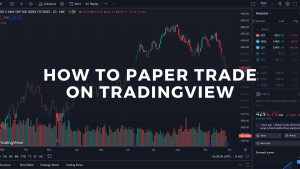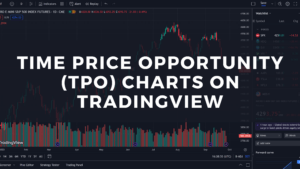You often read that trading should not be exciting and that professional trading has to be somewhat “boring”. But what does exciting or boring in the context of trading really mean and how can you adopt a trading route that is more “boring”? In this article, we show you the 4 different stages and types of trading, how excitement influences trading decisions and what a professional (boring) trading routine should look like.
 The new trader – unconscious excitement
The new trader – unconscious excitement
New traders don’t understand what trading is all about and how to approach the market in an efficient way – and it’s totally normal to start out this way. The new trader believes that trading is an activity where he can increase his net worth just by making a few investments; he sees the big market swings every day and naively thinks that trading can’t be that hard.
The new trader does not know much about risk management and money management. He typically does not use (a reasonable) stop loss method and his trading system is usually – more or less – characterized by picking trades randomly.
At this stage, everything is new and exciting. The trader has big dreams and hopes and he sees the limitless potential of the financial markets.
The consistently losing trader – conscious excitement and gambling
Once reality catches up and a trader has a better understanding about how trading works, he comes to the conclusion that it is not going to be that easy. At this stage, it is possible to see two different types of traders and the first, and more common one is the gambling trader.
He consciously seeks excitement in the markets. Even though he has been losing money consistently, he can’t escape the gambling mentality. He believes that he has a trading system, but he keeps changing his approach and continuously breaks his rules. His money management is flawed and he does not adhere to risk management principles.
The gambling trader hopes to get lucky somehow or stumble over a system that will just work without having to put in the effort. There is little hope for a gambling trader and his trading journey usually ends with him losing a lot of money.
Intermediate trader – suppressed excitement
A new trader who does not become a gambling trader understands that trading and gambling are two different things. Even though he is still inexperienced, he understands that risk and money management have to be his top priorities.
Traders who realize early on that professional trading has to be done in a controlled manner are more likely to make it to the next and final stage.
The professional – how a boring trading routine looks like
To fully understand this point, it is important to understand the differences between professional-boring trading and amateur-excitement. A professional routine should look like the following:
Putting in the work
Every night, you prepare your market analysis for the next day. You map out potential trade ideas and trade scenarios. Once you start your trading session, you then just wait until price comes to meet your criteria.
On the other hand, the amateur trader starts his trading platform in the morning and then starts his hunt for signals; he endlessly flips through time-frames and scans dozens of randomly chosen markets, hoping to stumble over profitable trades.
Taking the same trades over and over again
The professional knows exactly what his ideal trade looks like. Over the course of his trading career, he will take hundreds of trades that all look the same, have the same characteristics and meet the same criteria. For the professional, trading becomes a game of pattern recognition.
The trades of the amateur trader are all over the place; he continuously changes indicators and indicator settings, he switches from one method to the next and his trade picks are far from consistent.
Controlling the downside vs. hoping to land a lucky punch
The position sizing and risk management strategy of the professional always looks the same. He knows exactly how much he is going to risk on any single trade. He fully understands that one single trade does not have any meaning over the course of his trading career.
The money management approach of the amateur, if you can call it that is the exact opposite. He always changes the amount he risks on any one trade. He tries to play catch up after a loss by increasing his risk and he feels too confident after a few wins. He also puts too much emphasis on individual trades and frequently realizes large losses when trying to delay the realization of a loss.
Post trading analysis
After his trading session is done, the professional reviews his trades, he looks for weaknesses in his trading behavior and journals his trades. After the amateur is done, he just closes his platform and walks away, hoping to have more luck tomorrow.
Are you bored enough?
The word “boring” has a negative sound to it and it’s probably not the most accurate way to describe a professional trading routine. Terms that fit better are “repetitive” or “monotonous”. After a few years, the professionals find themselves doing the same things day in and day out. There is little variation in the daily life of a trader. The degree to how much your weekly routine changes is often a good indication of how far away you are from professional trading.
There is a substantial risk of loss in futures trading. Past performance is not indicative of future results.















